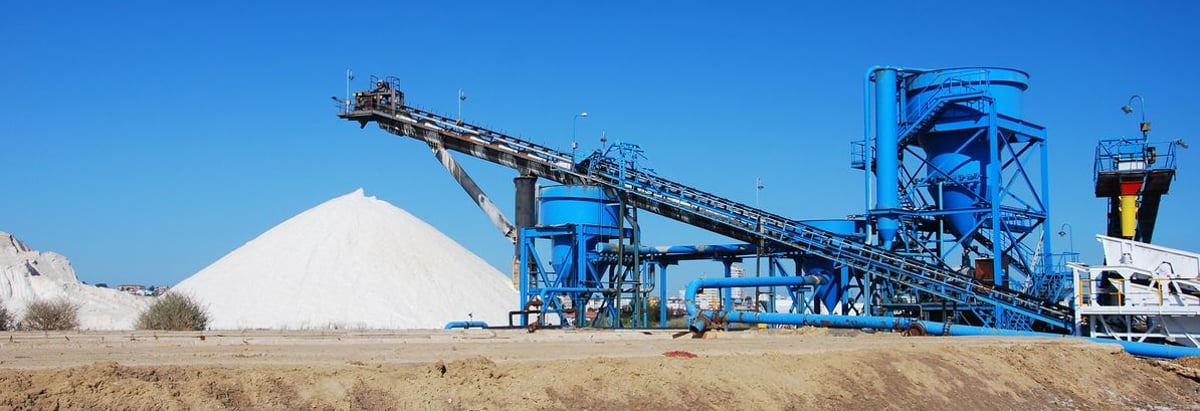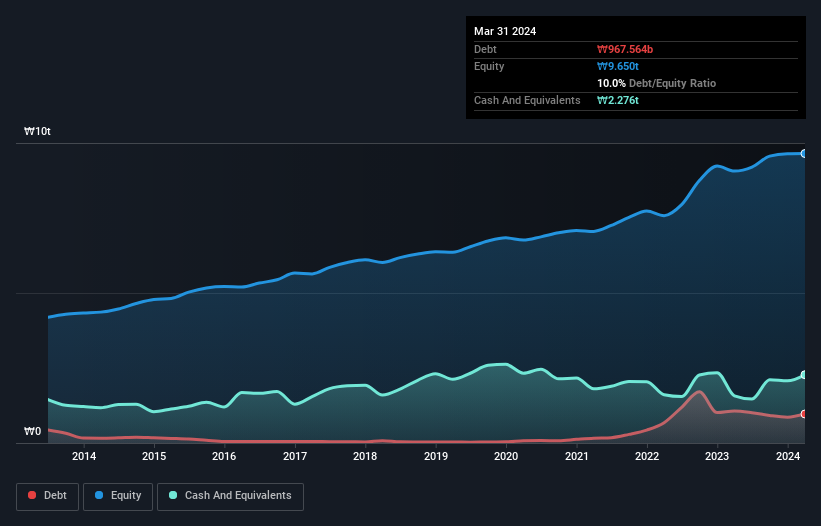- South Korea
- /
- Metals and Mining
- /
- KOSE:A010130
Korea Zinc (KRX:010130) Has A Pretty Healthy Balance Sheet

Warren Buffett famously said, 'Volatility is far from synonymous with risk.' So it might be obvious that you need to consider debt, when you think about how risky any given stock is, because too much debt can sink a company. We can see that Korea Zinc Inc. (KRX:010130) does use debt in its business. But the more important question is: how much risk is that debt creating?
When Is Debt A Problem?
Debt and other liabilities become risky for a business when it cannot easily fulfill those obligations, either with free cash flow or by raising capital at an attractive price. Part and parcel of capitalism is the process of 'creative destruction' where failed businesses are mercilessly liquidated by their bankers. While that is not too common, we often do see indebted companies permanently diluting shareholders because lenders force them to raise capital at a distressed price. Having said that, the most common situation is where a company manages its debt reasonably well - and to its own advantage. The first step when considering a company's debt levels is to consider its cash and debt together.
Check out our latest analysis for Korea Zinc
What Is Korea Zinc's Debt?
As you can see below, Korea Zinc had ₩967.6b of debt at March 2024, down from ₩1.07t a year prior. But it also has ₩2.28t in cash to offset that, meaning it has ₩1.31t net cash.

How Healthy Is Korea Zinc's Balance Sheet?
According to the last reported balance sheet, Korea Zinc had liabilities of ₩1.78t due within 12 months, and liabilities of ₩540.3b due beyond 12 months. On the other hand, it had cash of ₩2.28t and ₩606.7b worth of receivables due within a year. So it actually has ₩565.3b more liquid assets than total liabilities.
This surplus suggests that Korea Zinc has a conservative balance sheet, and could probably eliminate its debt without much difficulty. Succinctly put, Korea Zinc boasts net cash, so it's fair to say it does not have a heavy debt load!
But the bad news is that Korea Zinc has seen its EBIT plunge 11% in the last twelve months. We think hat kind of performance, if repeated frequently, could well lead to difficulties for the stock. When analysing debt levels, the balance sheet is the obvious place to start. But ultimately the future profitability of the business will decide if Korea Zinc can strengthen its balance sheet over time. So if you want to see what the professionals think, you might find this free report on analyst profit forecasts to be interesting.
But our final consideration is also important, because a company cannot pay debt with paper profits; it needs cold hard cash. While Korea Zinc has net cash on its balance sheet, it's still worth taking a look at its ability to convert earnings before interest and tax (EBIT) to free cash flow, to help us understand how quickly it is building (or eroding) that cash balance. In the last three years, Korea Zinc's free cash flow amounted to 39% of its EBIT, less than we'd expect. That weak cash conversion makes it more difficult to handle indebtedness.
Summing Up
While we empathize with investors who find debt concerning, you should keep in mind that Korea Zinc has net cash of ₩1.31t, as well as more liquid assets than liabilities. So we don't have any problem with Korea Zinc's use of debt. When analysing debt levels, the balance sheet is the obvious place to start. However, not all investment risk resides within the balance sheet - far from it. Be aware that Korea Zinc is showing 2 warning signs in our investment analysis , you should know about...
If you're interested in investing in businesses that can grow profits without the burden of debt, then check out this free list of growing businesses that have net cash on the balance sheet.
Valuation is complex, but we're here to simplify it.
Discover if Korea Zinc Company might be undervalued or overvalued with our detailed analysis, featuring fair value estimates, potential risks, dividends, insider trades, and its financial condition.
Access Free AnalysisHave feedback on this article? Concerned about the content? Get in touch with us directly. Alternatively, email editorial-team (at) simplywallst.com.
This article by Simply Wall St is general in nature. We provide commentary based on historical data and analyst forecasts only using an unbiased methodology and our articles are not intended to be financial advice. It does not constitute a recommendation to buy or sell any stock, and does not take account of your objectives, or your financial situation. We aim to bring you long-term focused analysis driven by fundamental data. Note that our analysis may not factor in the latest price-sensitive company announcements or qualitative material. Simply Wall St has no position in any stocks mentioned.
About KOSE:A010130
Korea Zinc Company
Operates as a general non-ferrous metal smelting company primarily in South Korea.
Adequate balance sheet slight.
Similar Companies
Market Insights
Community Narratives



